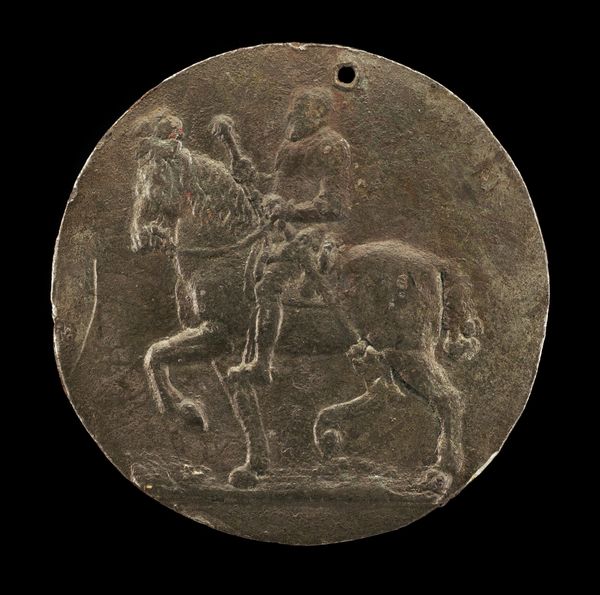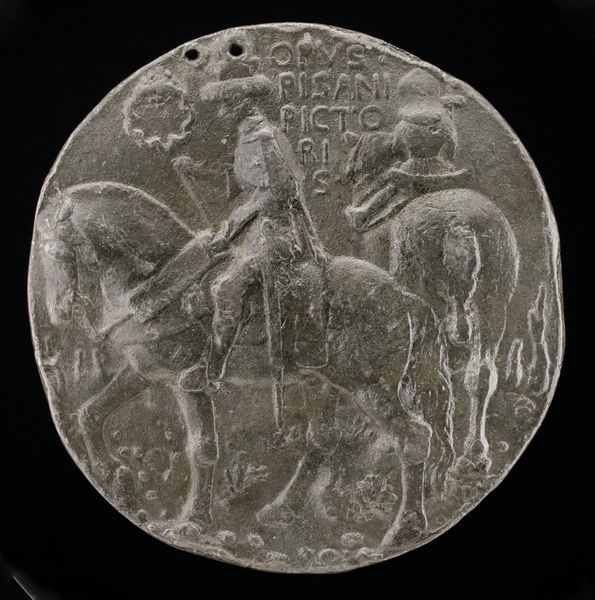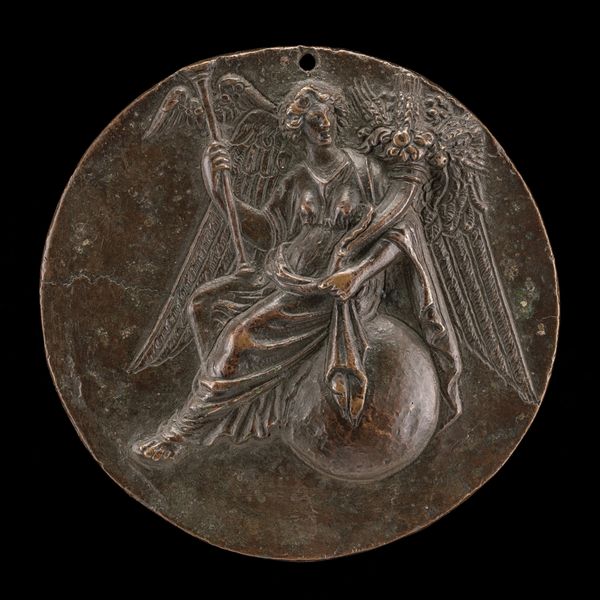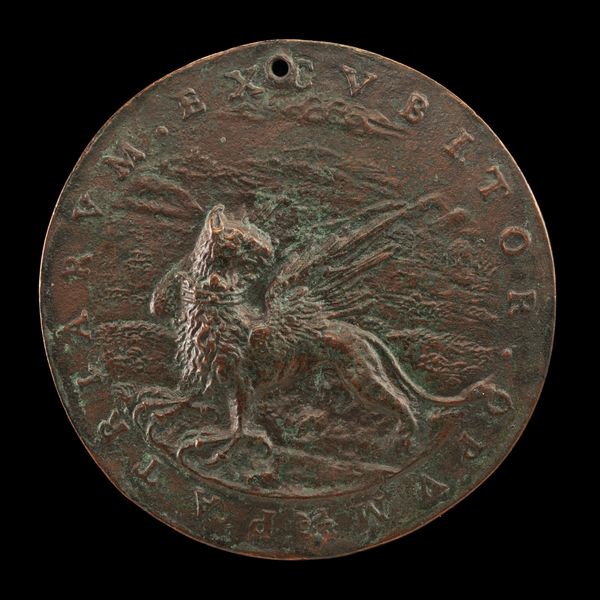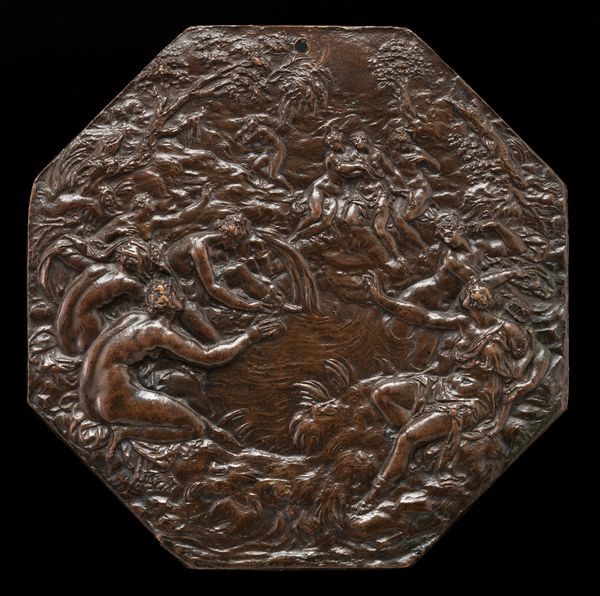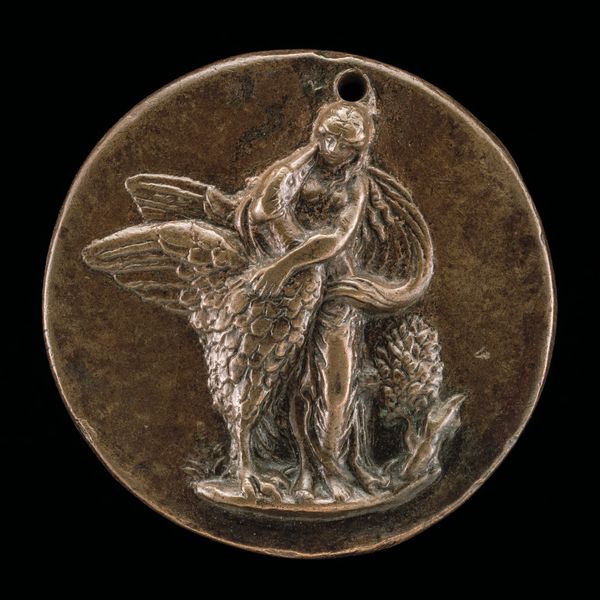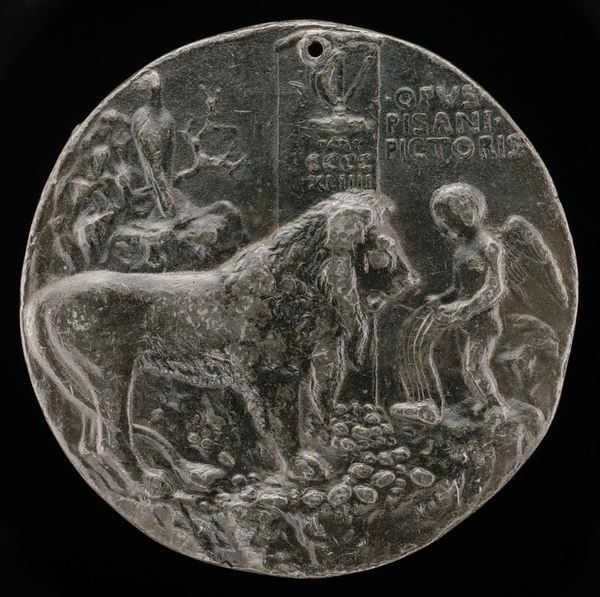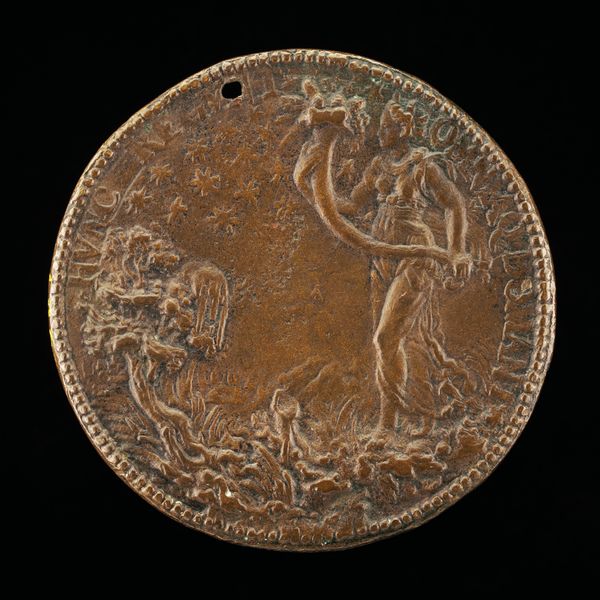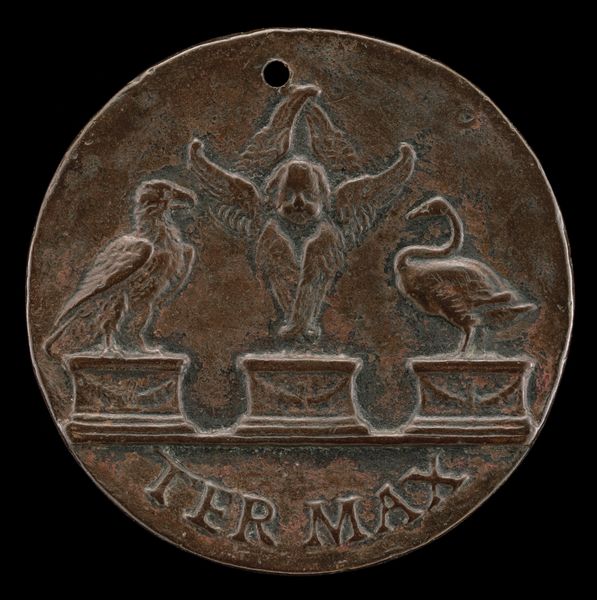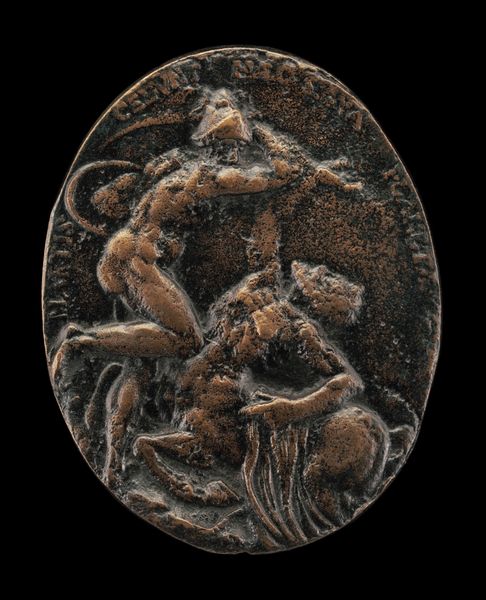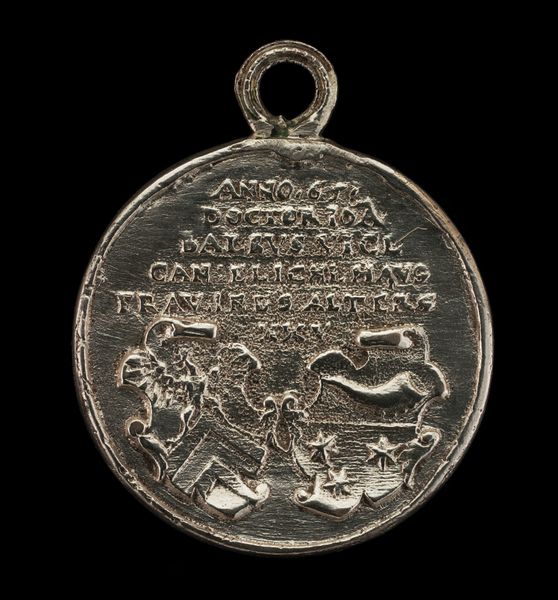
relief, bronze
#
relief
#
bronze
#
11_renaissance
Dimensions: overall (oval): 9.6 x 7.9 cm (3 3/4 x 3 1/8 in.) gross weight: 73 gr
Copyright: National Gallery of Art: CC0 1.0
Curator: What strikes me immediately about this bronze relief is the subject’s stillness and solitude—there's almost a melancholic aura surrounding it. Editor: Indeed, the Arabian Camel, or Dromedary as it's sometimes known, dating back to the late 16th century and attributed to Antonio Abondio, presents a rather serene figure. These reliefs served a crucial role as portable diplomatic gifts, symbolizing wealth and power in Renaissance courts. Curator: It's hard to ignore the problematic colonial implications intertwined with gifting an animal so intrinsically connected to the landscape and economies of Northern Africa and Western Asia, especially in an era defined by intensifying trade routes. Editor: Exactly. Understanding these objects means interrogating the dynamics of power and perception, especially as this piece was likely circulated amongst elite circles as a token of cultural understanding and even dominance. The camel becomes both a symbol of the exotic other and a diplomatic chess piece. Curator: How do you think its form contributes to its symbolic meaning? The camel, typically a hardworking animal in reality, seems frozen in time, divorced from labor or any contextual elements. Editor: I believe that reflects the preferences and social values of its time, with its clean lines and classical features. These artworks promoted specific ideals of order and status. It tells us that imagery wasn’t purely aesthetic. Curator: Right, which speaks volumes about who got to control these images, and who got omitted from their representation in European aristocracy. We must consider that even depictions of animals play into the history of race and class. Editor: Analyzing historical images, then, becomes this process of peeling back layers of ideology—revealing assumptions embedded within their production and distribution. Curator: It leaves me with a stronger impression of art as a mirror, reflecting cultural values but also distorting lived experiences, necessitating continuous engagement and critical perspectives. Editor: Absolutely. Thank you for this reminder to continuously push boundaries and reassess ingrained norms that dominate how we understand imagery today.
Comments
No comments
Be the first to comment and join the conversation on the ultimate creative platform.


